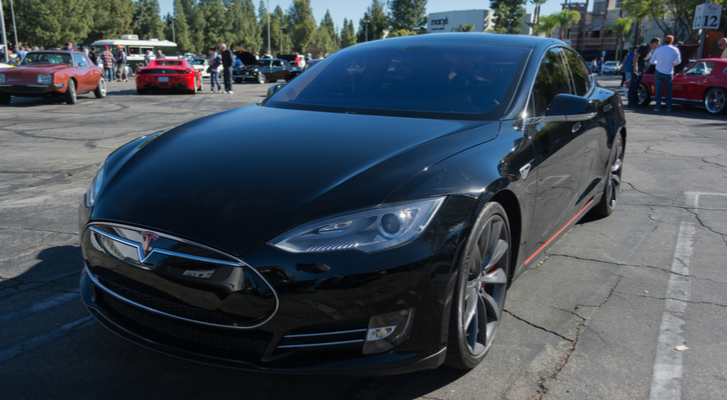Let me stipulate that Tesla (NASDAQ:TSLA) is great, and what it has done is amazing. In less than a decade Tesla has transformed the automotive industry. Its all-electric, high performance cars, designed and built in the USA, outshine anything on the road. Tesla has even done what many doubted it could do: It has scaled production. But is Tesla stock a buy?
Tesla made 53,339 cars in the three months ending in June, telling shareholders it will hit 10,000 per week “as fast as we can.” Based on this, Morgan Stanley plans to raise $2.5 billion in new equity.
To many people, Elon Musk is the hero of our age, working to make the Earth sustainable, working to take humanity beyond this planet, working to improve the human condition and create a symbiotic relationship to artificial intelligence.
But for all this, Tesla, and by extension, TSLA stock, can’t beat the math.
What the Math Says for Tesla Stock
Consider that TSLA had revenue of $3.4 billion during the second quarter, with gross margins of 20.6%. It didn’t make a profit. It lost $717 million. Gross margins were down from the same period a year earlier, when they were almost 28%.
If Tesla could multiply its revenue by a factor of 10, and make a decent profit, it could have revenue of $36.8 billion and net income of $2.4 billion. Those figures describe General Motors (NYSE:GM), which currently has a market cap of $49.5 billion.
The market cap behind Tesla stock? It’s $48.6 billion, after dropping by one-fourth since Aug. 7.
Now GM is no great shakes as an investment. It’s down 16% on the year, even more than Tesla, despite its production, and despite a profit that lets it deliver $1.52 in dividends a year, a yield of 4.44%.
It’s that way across the industry. Ford (NYSE:F) is down 25% and is now worth just $38 billion, despite quarterly revenue of $38.9 billion, net income of $1.07 billion and a 60-cent-per-year dividend now yielding a whopping 6.35%. Fiat Chrysler (NYSE:FCAU) tells a similar story, a market cap of $27 billion, on quarterly revenue of $29 billion.
That’s just what car companies are worth.
To the Moon, and Beyond
TSLA stock is worth 10 times more than it should be because it’s growing, 35% year-over-year so far in 2018, and because it makes more than cars. It also makes batteries and solar panels. The trouble is that batteries and panels represent just 10% of the business, and the margins are half those in cars.
So Tesla is a car company, with an erratic CEO right out of the movies. Elon Musk’s SpaceX, which is privately held and worth $27.5 billion, sent a Tesla into space, and now has plans to send a tourist around the Moon.
Musk acts like Tesla, too, is private, with the Justice Department now examining his tweets for signs of securities fraud, and going on a video podcast to smoke pot with the host. This wouldn’t be a problem if Tesla were indeed private, or if Musk were taking it private. But it isn’t, and he hasn’t.
The Bottom Line on TSLA Stock
The math is the math.
Tesla is worth 10 times what its production says it should be, and while it’s growing 35% per year, that means it would still take a decade for it to equal the size of companies that are worth less than Tesla itself is.
Meanwhile, autonomous cars are on their way. Tesla cars are semi-autonomous, but fully autonomous cars are coming. GM says it will have them next year.
The industry’s new question becomes, if you’re not driving the car, does it matter if it’s sleek, and electric, and high performance? When the industry turns to its next chapter, with cars as a utility rather than something you buy, is there going to be room left for Tesla stock to run higher with Elon Musk and his dreams?
Dana Blankenhorn is a financial and technology journalist. He is the author of a new mystery thriller, The Reluctant Detective Finds Her Family, available now at the Amazon Kindle store. Write him at danablankenhorn@gmail.com or follow him on Twitter at @danablankenhorn. As of this writing he owned shares in F.

